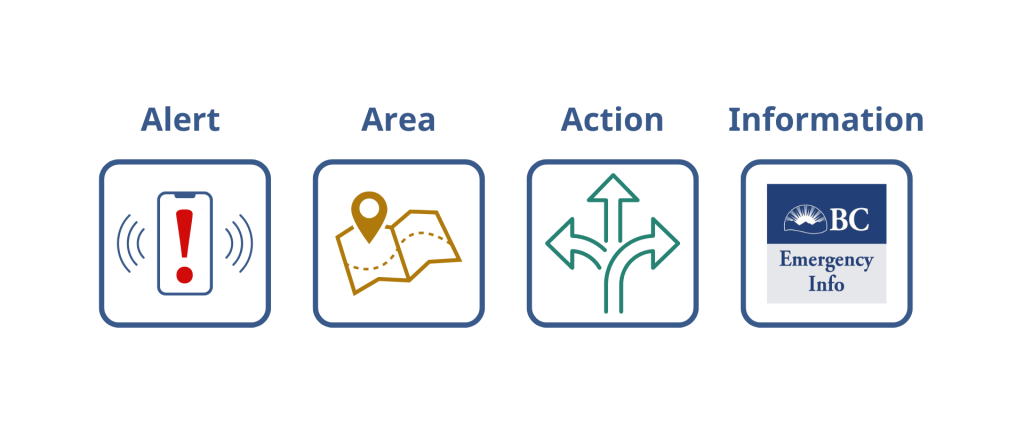In B.C., emergency alerts are broadcast on TV, radio and cell phones to provide urgent public safety information during potentially life-threatening emergencies.
Many of us are familiar with the unique vibration and alert tone associated with emergency alerts thanks to system tests that take place twice a year. But do you know what to do if you receive a real emergency alert?
Read the emergency alert and take action
If you hear the unique ringtone or feel the vibrations of an emergency alert, you will know that action is required. Follow these four steps:

Step 1: Stop what you are doing and read the entire alert.
Step 2: Determine if you are in the impacted area. This can be a stressful time, take a moment to re-read the alert and visit the webpage included in the message for more information or a map.
Step 3: If you are in the impacted area, follow all directions. This could mean you need to evacuate or shelter-in-place (stay where you are).
Step 4: When safe to do so, check other sources of information from your First Nation or local government.
There may be a situation where you receive an emergency alert but you are outside the impacted area. This is called “alert overreach”. Overreach is likely and should be expected. Always read the entire alert so you know what action you need to take.
What does an emergency alert look like?
Knowing what to expect when you receive an emergency alert can help you stay calm and focused in a real emergency. Here is an example of a B.C. emergency alert that went out in May 2024 to communities that were impacted by wildfire:

BC EMERGENCY ALERT issued by Northern Rockies Regional Municipality and Fort Nelson First Nation due to Wildfire. Evacuate immediately if you are in the following area: the Town of Fort Nelson and surrounding area and Fort Nelson First Nation I.R. 2. The wildfire poses a threat to human life. Evacuate immediately to Fort St. John reception centre at the North Peace Arena at 9805 96th Ave, Fort St. John If you are unable to evacuate call 9-1-1. Click for more info: https://www.emergencyinfobc.gov.bc.ca/event/10may24.
Each alert will look a bit different depending on the emergency, but you can expect the alert to include information on:
- Who issued the alert
- The reason for the alert
- The impacted area
- The action required
- Where to go for more information.
When would you receive an emergency alert?
Depending on the type of emergency, you could receive an alert from your local government or First Nation, Emergency Management and Climate Readiness, BC RCMP, Environment and Climate Change Canada or the Government of Canada.
You may receive an emergency alert in the following situations:
- High-risk flood evacuations
- High-risk wildfire evacuations
- Extreme heat emergencies
- Tsunami warnings
- Amber Alerts
- Civil emergencies
- Severe weather events
- Earthquake Early Warning
Learn more about how to prepare for these emergencies at PreparedBC.ca.
Talk to your friends, neighbours and loved ones
Share what you’ve learned about emergency alerts. Get prepared for any emergency by making an emergency plan and identifying reliable sources of information.
Talk to your First Nation or local government to learn about how they will communicate locally during an emergency.
Remember that EmergencyInfoBC is your provincial source for active emergency information.

